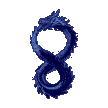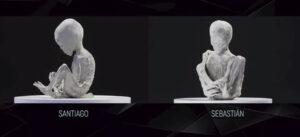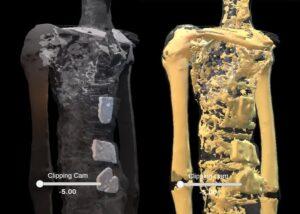February 2003, Iraq: When Tom McLeane Went to Hunt the Demon Pazuzu in His Assyrian Pit of Hell
Last updated on September 2nd, 2023 at 04:38 pm
_χρόνος διαβασματός : [ 5 ] minutes
Tom was in Iraq in 2003, one month before the invasion took place…
“Pazuzu, Lord of Fevers and Plagues,
Dark Angel of the Four Winds with rotting genitals from which he howls through sharpened teeth over stricken cities….”
William S. Burroughs, Cities of the Red Night
Authored by McLeane via Travel In The Heart of Assyrian Darkness
Authored by Oriental Institute of Chigago via Post
Authored by William Peter Blatty via The Exorcist
Authored by Louvre Museum via Artifact Descriptions
Mail from T. McLeane, Iraq, February 2003
Recently, I was talking with a friend about The Exorcist. The opening scene shows an archeological dig site near Nienevah which originally means The City of Blood;
Iraqi workers exhuming (defiling) a mound and what they find is two contagious artifacts: a figurine of Pazuzu (Evil against Evil) and a medallion of Mary and Jesus which is amazingly at a wrong place (in a pre-Christian Assyrian City).
This exhumation cipher becomes the central riddle of the movie.
Yesterday, Iranian News broadcasted some interesting reports from Pasargad, the tomb of Cyrus, the great (who spread Zoroastrian monotheism in Persia), nearly 200km away from Shiraz.
The archeologists have accidentally dug up a huge column holding a strange picture of an unknown deity:
a (wo)man with four wings (four wings entities are really rare in mythologies), an Egyptian helmet, two markhor’s (an Asian wild goat) horns and two snakes germinated on his head (a composition of Baphomet, Zahak, Ashemogha and an Egyptian entity).
I’m trying to go there and take some photos as soon as possible.
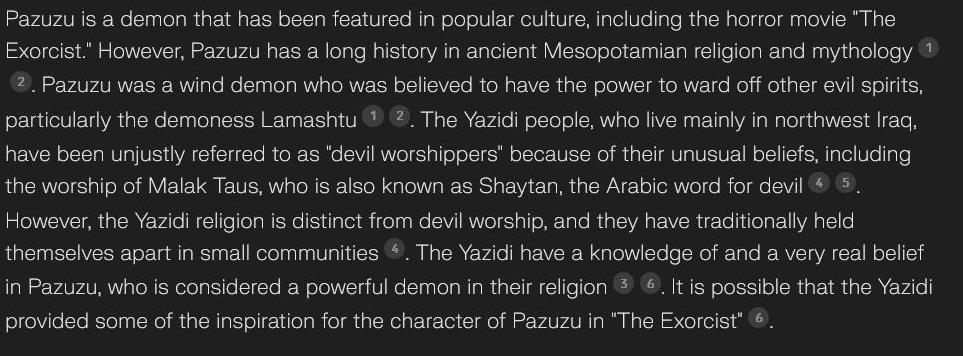
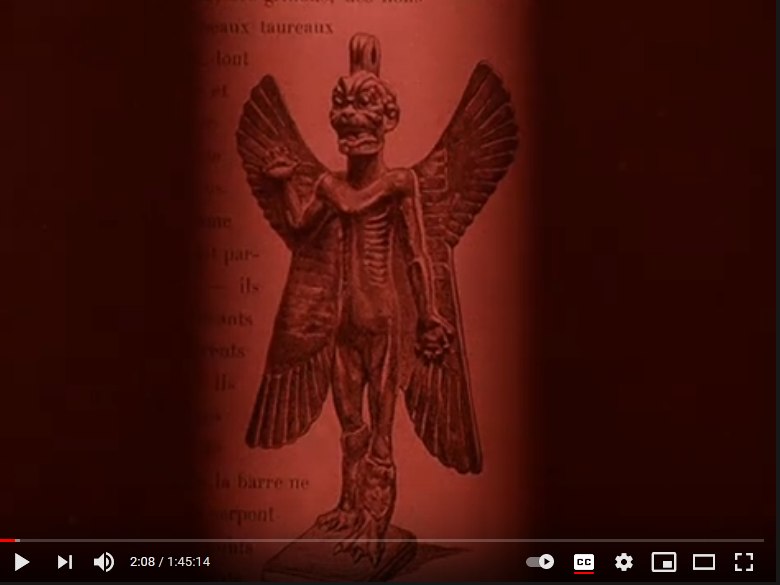
In a recent conversation about the classic horror film “The Exorcist,” I was reminded of the opening scene, which takes place at an archaeological dig site near Nineveh, known as The City of Blood. The workers at the site uncover two mysterious artifacts: a figurine of the demon Pazuzu and a medallion depicting Mary and Jesus, which is curiously out of place in a pre-Christian Assyrian city.
I decided. Next day I was flying over Iraq meanwhile U.S. Invasion was about to start.

Oriental Institute of Chicago:
The demon Pazuzu represented by this figurine stands like a human but has a scorpion’s body, feathered wings and legs, talons, and a lion-like face on both front and back. Pazuzu, the “king of the evil wind demons,” was not entirely unfriendly to mankind. As an enemy of the dreaded Lamashtu demon, bearer of sickness especially to women and children, Pazuzu is often portrayed on amulets used as protection in childbirth.
This enigmatic discovery becomes the central riddle of the movie. In a striking parallel, recent Iranian news reports have revealed a fascinating find at Pasargad, the tomb of Cyrus the Great, located nearly 200 km away from Shiraz.
Archaeologists have accidentally unearthed a massive column bearing the image of an unknown deity, a peculiar figure with four wings, an Egyptian helmet, two markhor’s horns, and two snakes sprouting from its head.
This bizarre combination of features from Baphomet, Zahak, Ashemogha, and an Egyptian entity is extremely rare in mythological representations.





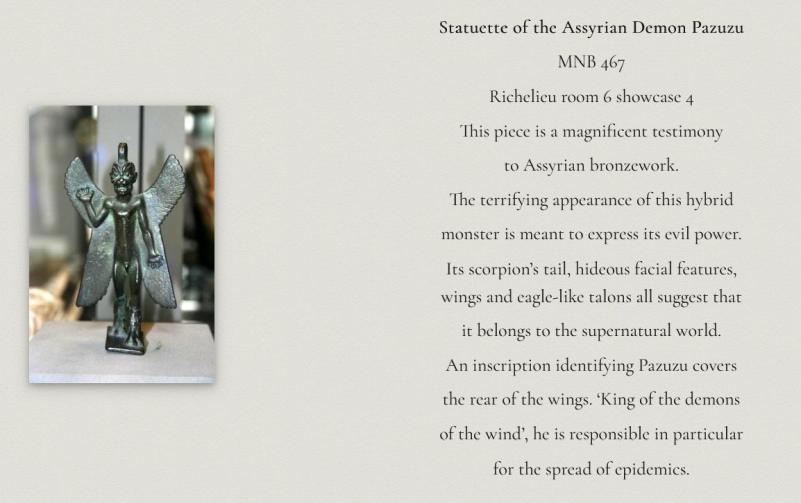
As an author and shadow editor, I couldn’t resist the opportunity to delve deeper into this thrilling archaeological mystery, exploring the connections between these two discoveries and the potential consequences of unearthing ancient artifacts.
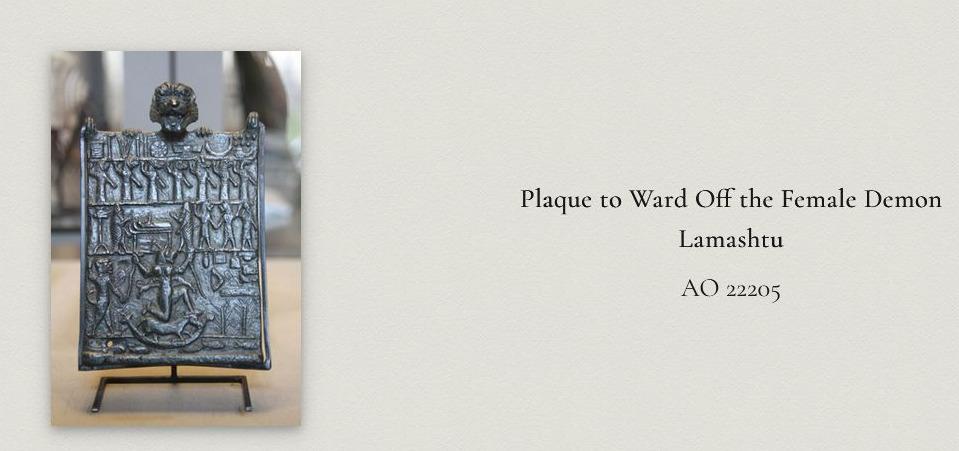
The City of Blood: A Haunting Discovery
The excavation at Nineveh in “The Exorcist” unveils a figurine of Pazuzu, a demon with a long history in ancient Mesopotamian religion and mythology. The Yazidi people, who live mainly in northwest Iraq, have a strong belief in Pazuzu as a powerful demon in their religion. The discovery of the Pazuzu figurine, along with the medallion of Mary and Jesus, raises questions about the origins and purpose of these artifacts, as well as the potential dangers of disturbing ancient relics.

The mighty wind devil of the Assyrian and Babylonian wastelands can be considered as one of the most malevolent elemental forces in the world of mythology. As Pazuzu, this middle-eastern demon has reached popular attention in William Peter Blatty’s sensational novel, The Exorcist. The film this novel inspired brought the subject of demonic possession into common parlance, but it was left to the misunderstood, atmospheric sequel, Exorcist II: The Heretic, directed by John Boorman, to represent the malefic powers of Pazuzu in an authentic, mythological context as a desert scavenger; bringer of desolation and plague. This was imaged effectively in the film as a vast locust swarm, heralding an apocalypse of starvation.
In his erudite book, The Domain of Devils, Eric Marple describes the wind demon as the most terrible of all demonic entities, having the power to spread loathsome diseases with his dry fiery breath. The demon has “for a head the almost fleshless skull of a dog”1 representing death, disease, and as the fleshless death’s head of the desert scavenger, starvation. Significantly, William Woods states in his History of the Devil: “… in Mesopotamia the horned demon, Pazuzu, rode on the wind and carried malaria…” thus emphasising the demon’s destructive role as “lord of fevers and plagues.” Perhaps relating Pazuzu to the devouring dragon, Typhon, “angel of the fatal winds”, equated with the disease Typhoid.
Another representation of the wind demon can be traced in the Old Testament, where the devil is described as a hairy black creature; a haunter of the desert wastelands.
The idea of the wind devil as a desert creature may derive from the Egyptian concept of Set, the destroyer, most ancient of the gods, who was represented as a strange, dog-like animal, not unlike that scavenging denizen of the desert, the jackal. Kenneth Grant has called this manifestation of Set, Shugal “the desert fox symbolic of Set, the male half of the Beast 666.” The number of Shugal being 333. The “female” half of the Beast is Choronzon (333), another pestilential being – representing Chaos in all its latent or manifested aspects. Choronzon is said to have driven Aleister Crowley insane by his invocation of the entity in the North African desert.5 Representing the malaise of chaos and destruction Choronzon is probably one of the most complex symbols in western occultism.
Interestingly, in relating Pazuzu to the concept of the Beast, we find his number is 107. Kenneth Grant states that this number is the number of the angel of Leo, OVAL, the messenger of the Beast.6 Oval literally means “egg”, and therefore refers to the aeon of the “daughter”, or the aeon of Set, which is still in embryonic form. In many of the world’s ancient theologies, this final aeon is the era of destruction, when the messenger of the Beast, Pazuzu, delivers his word: the howl of pestilential desert wind. The ancients may have recognised this word as the dread “great dragon”: ATEM, whose number is 440; it is also the number of “to annihilate”: “cease”, “disappear”, and, significantly, “complete”, which may refer to the ending of the cycle, as ATEM is also the goddess of periodicity, identical to the terrible Hindu goddess, Kali the destroyer. It is also interesting to note that 107+333=440. This formula may represent the ultimate blast of devastating wind from the mouth of the “great dragon”, ATEM, the Beast of the Apocalypse.
In relating these concepts to the ancient middle-eastern demon of the South-West Wind, we can understand why this symbol was regarded with such awe and terror. As the most ruthlessly destructive demon of the pantheon of nefarious beings, the wind devil represents the destruction of human life itself.
The Tomb of Cyrus: A Sinister Revelation
The strange deity discovered at Pasargad has left archaeologists and historians puzzled and concerned.
The figure’s unique combination of features from various mythological entities suggests a possible connection to Pazuzu or other ancient demons.
Moreover, the discovery raises concerns about the consequences of unearthing ancient artifacts and deities, as they may harbor contagious properties that could unleash sinister forces.
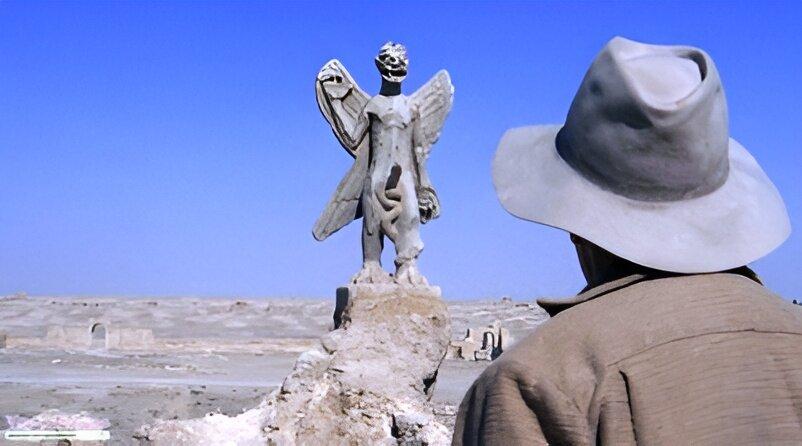
As I plan to visit the site and capture photographs of this enigmatic deity, I can’t help but wonder if this thrilling archaeological mystery will lead to a horrifying revelation.
Will the excavation at Pasargad unleash a malevolent force, just as the exhumation at Nineveh did in “The Exorcist”?
Only time will tell, but one thing is certain: the line between reality and horror is often blurred, and the secrets of the past may hold terrifying consequences for the present.
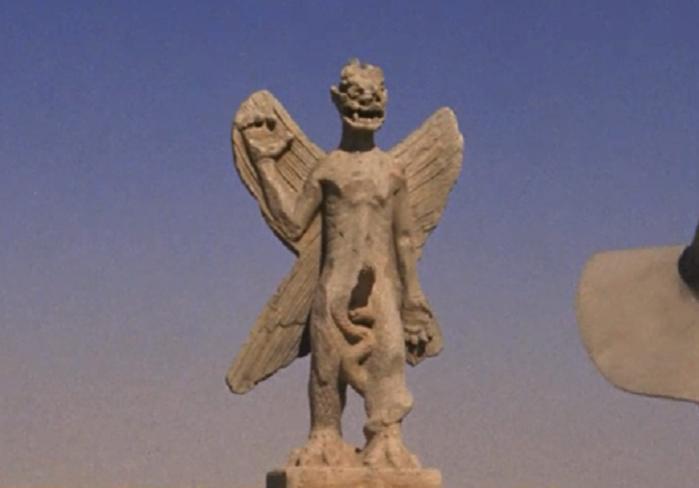
–
“Do Not Question The Nature of One’s Own Reality It’s A Sin Against God”
If you are interested in any of the issues raised in this article, please call the Samaritans for free on +44 116123 or visit their division at: https://www.samaritans.org
If you liked the post and want contribute to its cause leave us a contribution, anonymity guaranteed thanks to Monero :
